The excavation site was photographed that day
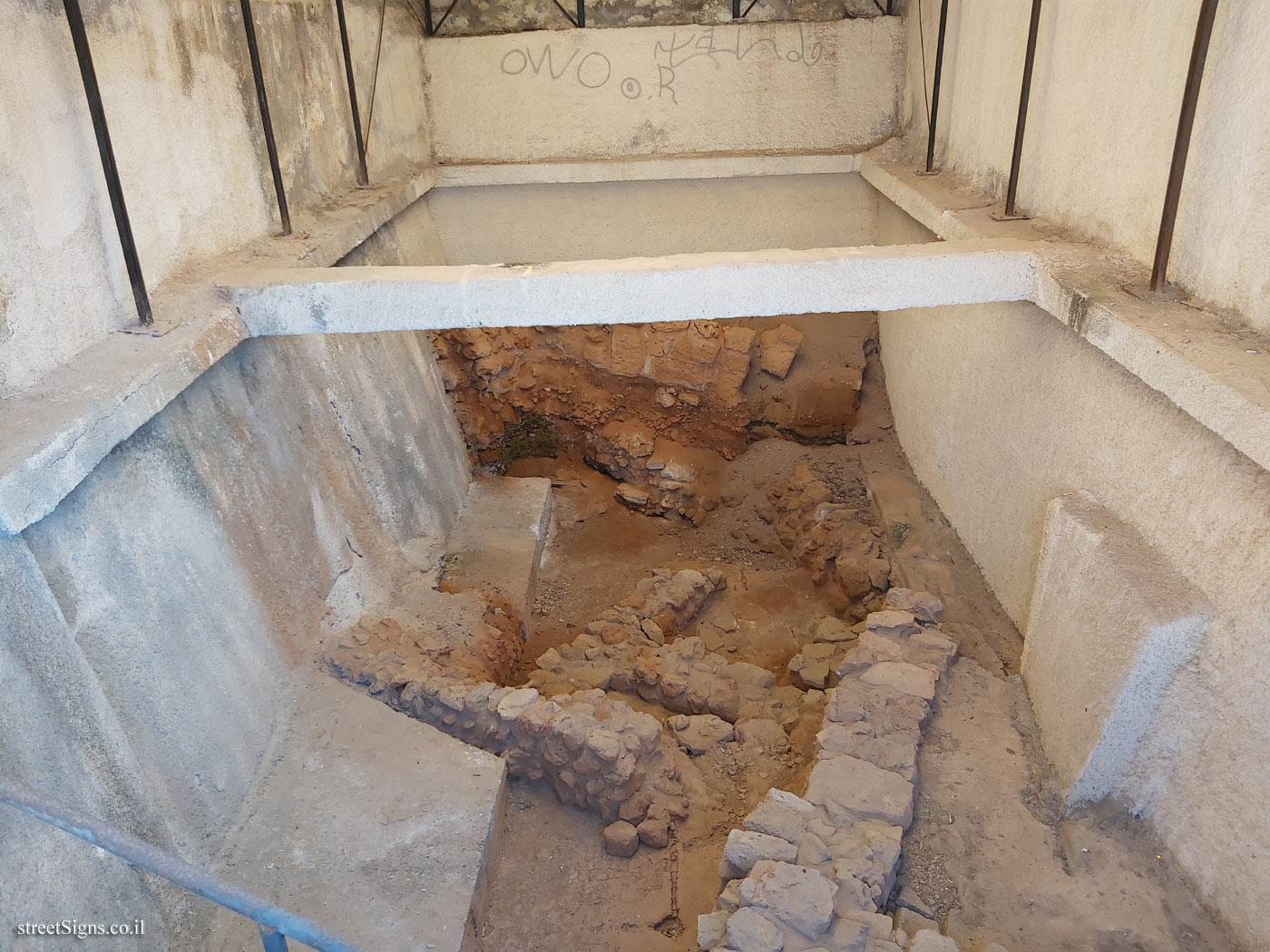 Click for a larger image
Click for a larger image [The pictures on the sign:
Topographic plan of the city of Chania. Places to visit archeological sites.
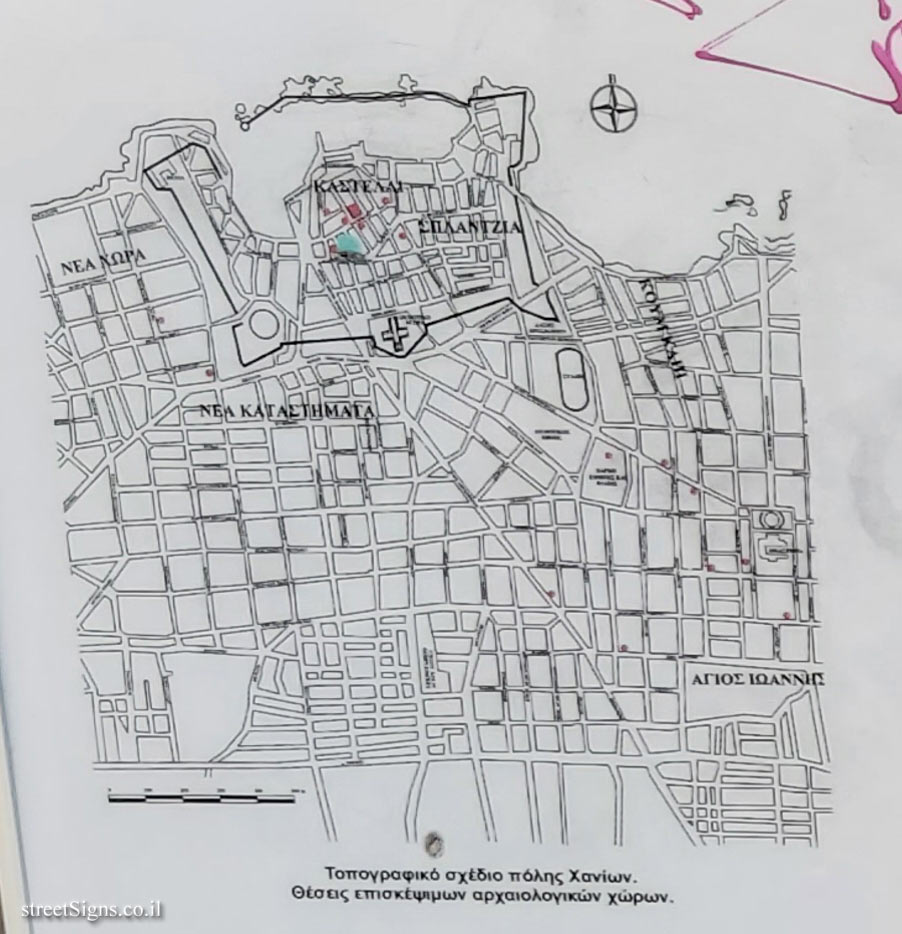 Click for a larger image
Click for a larger image Fig. 1: General view of the excavation site
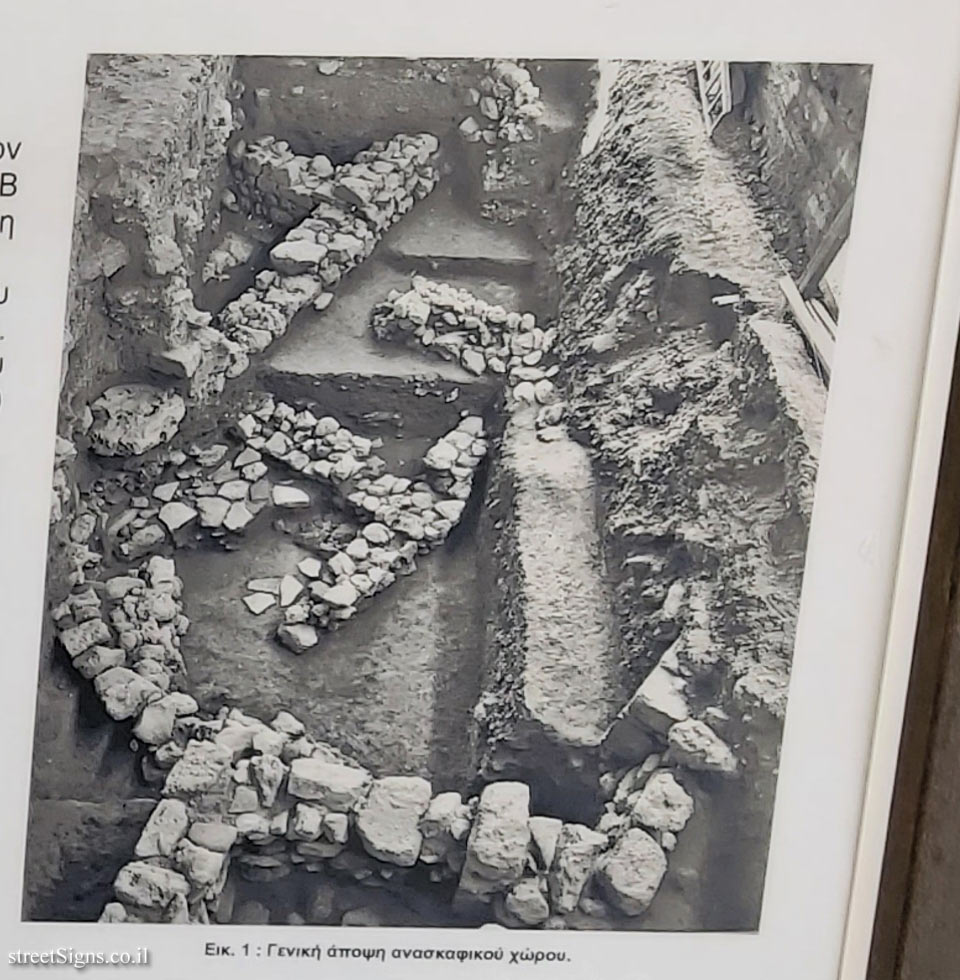 Click for a larger image
Click for a larger image Fig. 2: Amphora and basin from the excavation
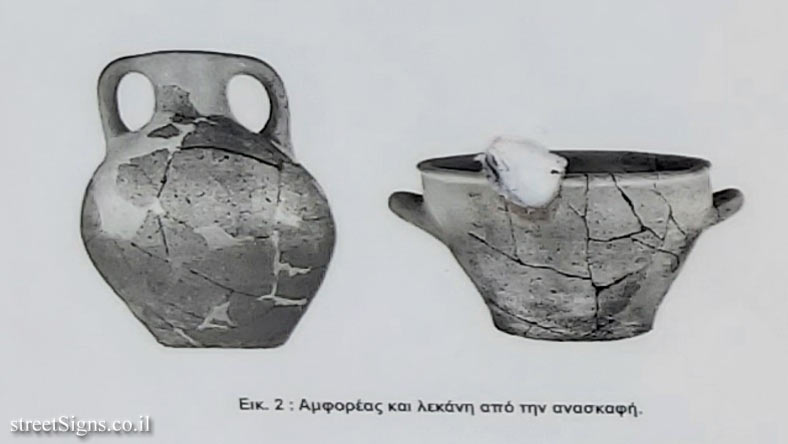 Click for a larger image
Click for a larger image Fig. 3: Round cup YMII period
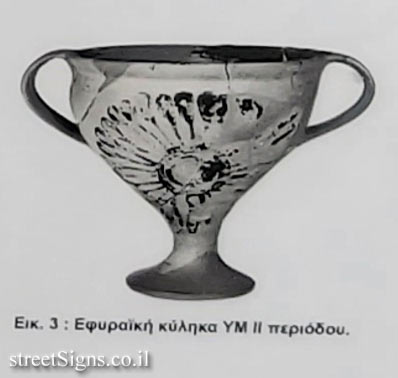 Click for a larger image
Click for a larger image Fig. 4: Bread-shaped alabaster
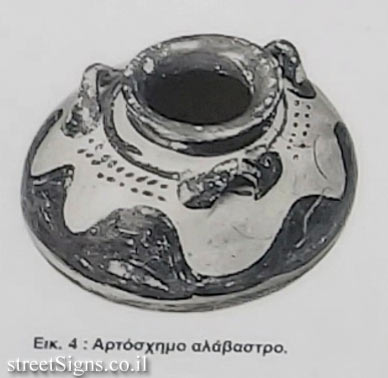 Click for a larger image
Click for a larger image Fig. 5 Sealing with a representation of a seated female deity feeding wild.
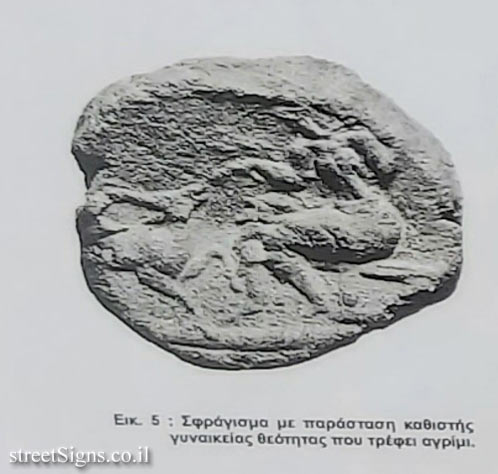 Click for a larger image
Click for a larger image Fig. 6: Sealing with herbal composition ("lion mask").
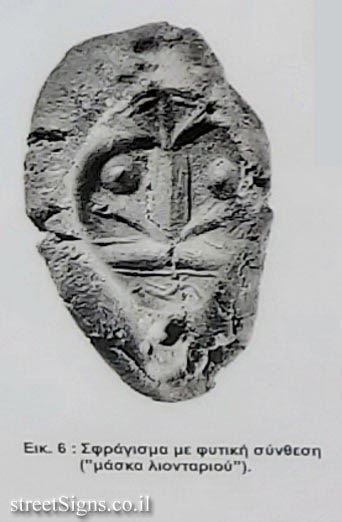 Click for a larger image
Click for a larger image Fig. 7. Clay tablets with ideograms of Linear A writing
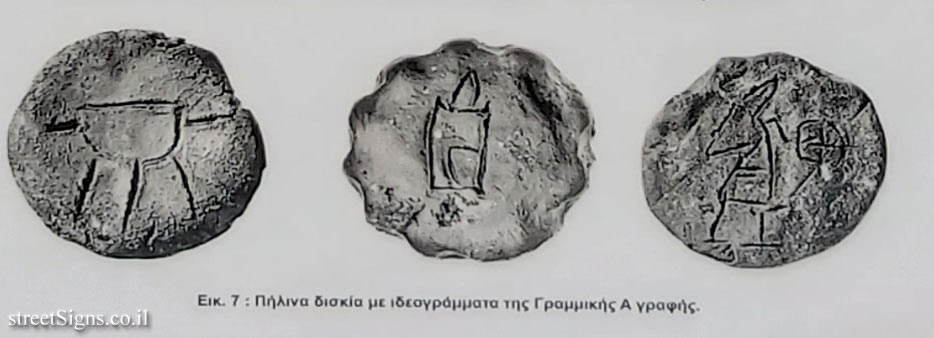 Click for a larger image
Click for a larger image Fig. 8: Clay tablets with texts of Linear A writing
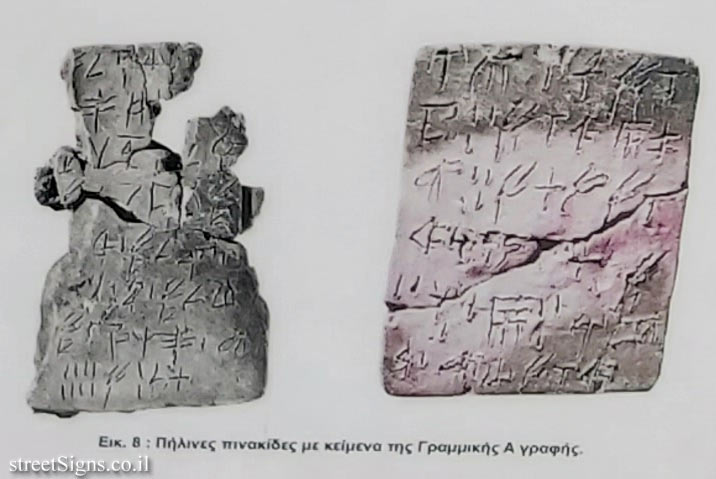 Click for a larger image Translation of the text on the sign
Click for a larger image Translation of the text on the sign:
Minoan Kydonia The modern city of Chania is founded on the Minoan city that at least from the 14th c. e.g. It is considered that it was called Kydonia or ku-do-ni-ja in Knossian tablets of the Linear B script. According to tradition, it was one of the three main cities founded by Minos in Crete (Knossos, Phaistos, Kydonia): Diodorus Sikeliotis V, 78.2.
The excavations of the last forty years have brought to light important remains of the Minoan settlement on the hill of Kastelli and in the neighboring district of Splantzia, in the Old Town. The archeological findings in the above places represent all the archeological phases of the Minoan civilization, from the pre-Ionian period (3650 BC) to the Late III III (1200 BC) period.
The neo-palace period (1600 - 1450 BC) as well as the Cretaceous-Mycenaean post-palace period (1400-1100 BC), are to this day the best known and best combined phases of the Minoan. of Culture in Chania. The neo-palace installation of Chania is classified in the palace centers with a careful urban plan, centralized power and bureaucratic organization. In the last period of Minoan civilization, when Crete is now part of the Mycenaean world, Kydonia presents impressive prosperity and is the focal point of an overseas trade network, with contacts in mainland Greece, the Cyclades, Cyprus, Canaan, Syria, Egypt, Italy and Sardinia.
The property plot
Vakalounaki was excavated in the years 1973--1975, and brought to light part of the archive of Minoan Kydonia (Fig. 1
 Click for a larger image
Click for a larger image).
Remains of a building and paving of the geometric period were found on the flat side of the plot and in the upper acres. On the east side are the fragmentary remains of Minoan structures found in the upper acres. Dated to YM III B (1300-1200 BC) and YM III C (1200-1100 BC) period. ), which seem to have been destroyed by the great fire of 1450 BC. , which is located in other Cretan centers outside the palace of Knossos. On the floor of a building, an acre was found with bright red paint, from the Baking of the dismantled ohm bricks, which also contained small pieces of burnt wood, small burnt pumice, fragments of colored limestone and clay mortars. of Minoan Kydonia: 72 fragments of tablets (Fig. 8
 Click for a larger image
Click for a larger image), 104 tablets (Fig. 7
 Click for a larger image
Click for a larger image), 28 polyhedral and 58 simple seals. The signs have texts in Linear A writing. Dots or ideograms of the same writing are engraved on one surface of the tablets and on one or two sides of the polyhedral seals. The tablets bear multiple imprints of the same seal on their periphery and polyhedral seals on one of their three long faces. The simple seals have mainly an imprint and are unwritten (Fig. 5
 Click for a larger image
Click for a larger image - 6
 Click for a larger image
Click for a larger image). The objects in the archive were not found in their place on the floor. It seems that they either fell from the floor or came from a building that was further north, at a higher level.
Remains of a third building (building III), dating to the MM II -YM I period (ca. 1700-1600 BC), were found on the west side of the site. It seems that all three buildings were repaired after the catastrophic fire of the YMIB period ( 1480-1425 BC) and continued to operate until the YM III AI period (1400-1370 BC).
In a deeper section of the buildings, a cobblestone, probably of outdoor color, of the MM III period was discovered. The paving stone was built on the remains of an earlier building of the MM I-II period (2160-1700 BC) that contains remains of walls and paving.
Learn about:

 Click for a larger image
Click for a larger image  Click for a larger image
Click for a larger image  Click for a larger image
Click for a larger image  Click for a larger image
Click for a larger image  Click for a larger image
Click for a larger image  Click for a larger image
Click for a larger image  Click for a larger image
Click for a larger image  Click for a larger image
Click for a larger image  Click for a larger image
Click for a larger image  Click for a larger image
Click for a larger image  Click for a larger image).
Click for a larger image).  Click for a larger image), 104 tablets (Fig. 7
Click for a larger image), 104 tablets (Fig. 7  Click for a larger image), 28 polyhedral and 58 simple seals. The signs have texts in Linear A writing. Dots or ideograms of the same writing are engraved on one surface of the tablets and on one or two sides of the polyhedral seals. The tablets bear multiple imprints of the same seal on their periphery and polyhedral seals on one of their three long faces. The simple seals have mainly an imprint and are unwritten (Fig. 5
Click for a larger image), 28 polyhedral and 58 simple seals. The signs have texts in Linear A writing. Dots or ideograms of the same writing are engraved on one surface of the tablets and on one or two sides of the polyhedral seals. The tablets bear multiple imprints of the same seal on their periphery and polyhedral seals on one of their three long faces. The simple seals have mainly an imprint and are unwritten (Fig. 5  Click for a larger image - 6
Click for a larger image - 6  Click for a larger image). The objects in the archive were not found in their place on the floor. It seems that they either fell from the floor or came from a building that was further north, at a higher level.
Click for a larger image). The objects in the archive were not found in their place on the floor. It seems that they either fell from the floor or came from a building that was further north, at a higher level.